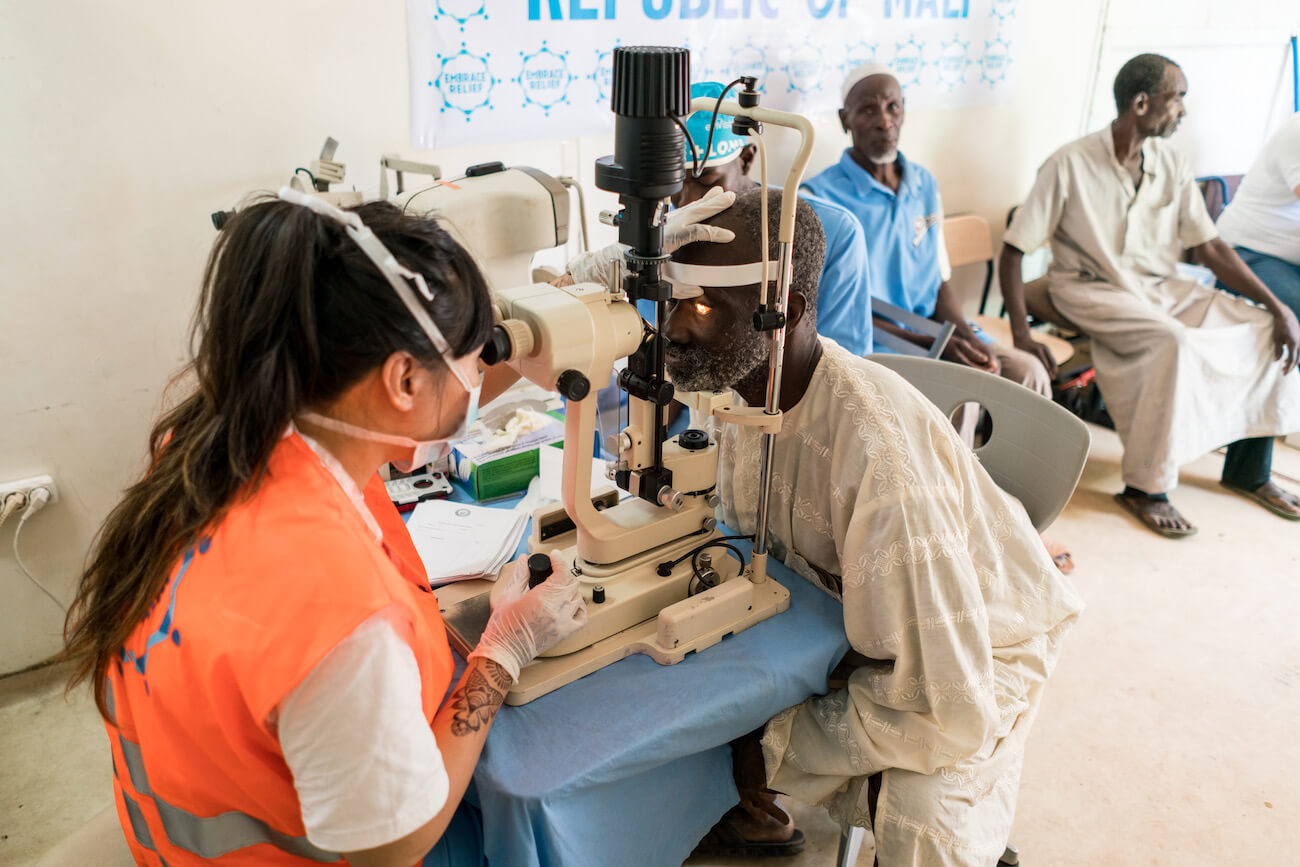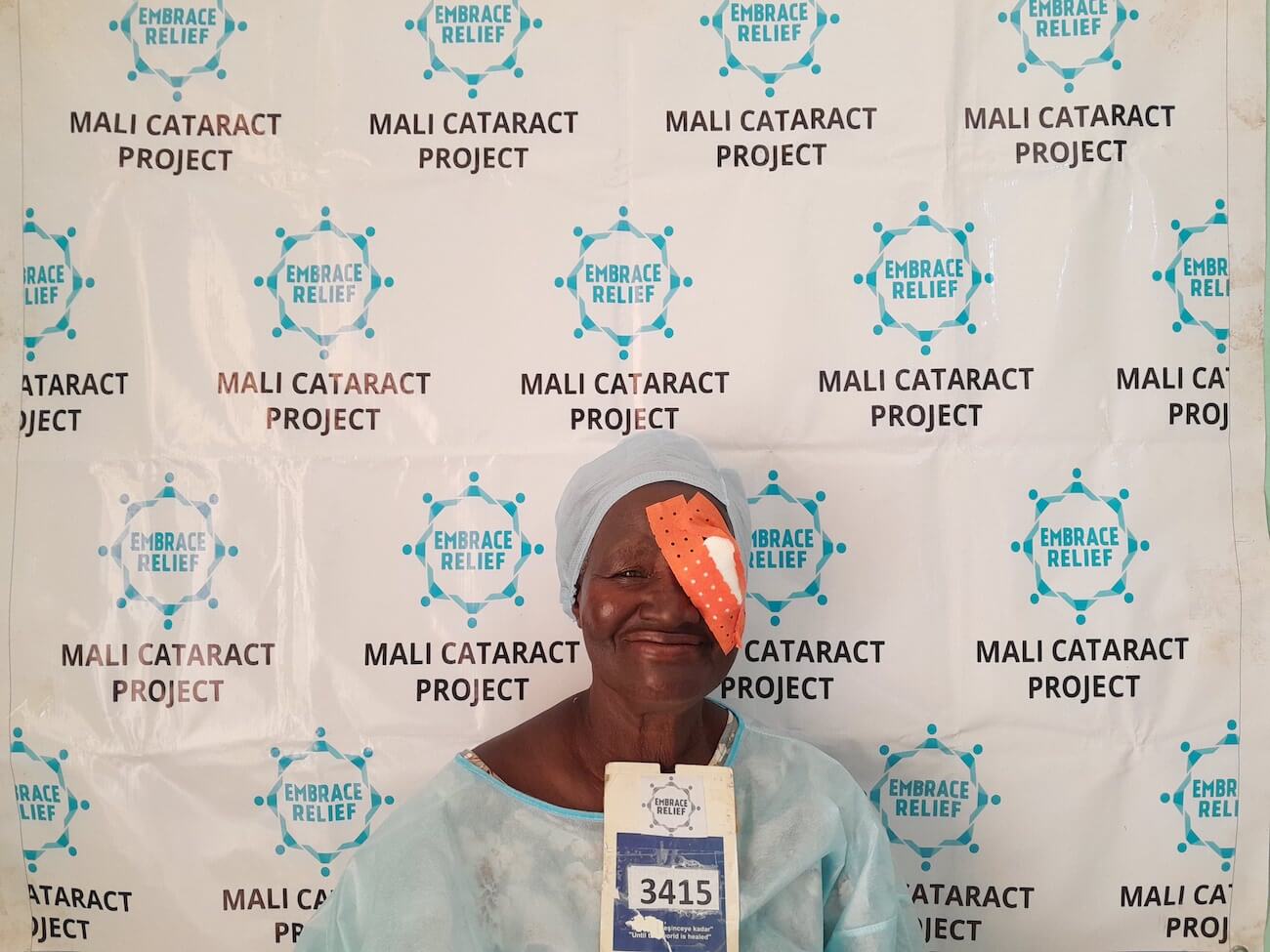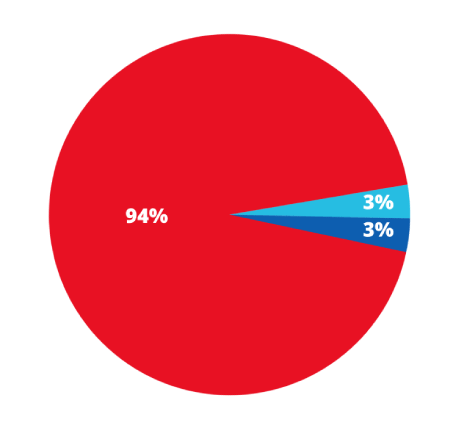Summary
- 43 million people are blind globally, with 1 million living in the U.S.
- 89% of global blindness is concentrated in underdeveloped countries, like Mali, Burkina Faso, Uganda, Kenya, and Afghanistan.
- Knowledge of eye health, including the types of blindness, causes, symptoms, and treatments, is paramount in maintaining your vision and overall well-being.
- There are five primary types of blindness, each caused by a variety of factors that contribute to vision loss.
- Sponsoring a cataract surgery in an underdeveloped country only costs 100 USD.
Many factors can contribute to blindness or visual impairment. To maintain eye health and overall well-being, it is essential to know the types, causes, symptoms, and treatments for blindness. In the U.S., there are more than 1 million people are blind. Globally, approximately 43 million people are blind, with 89% of these cases being in developing countries. Access to basic health services like full-body checkups means early intervention and lessens the likelihood of vision loss, a luxury millions of people worldwide do not have.
Types of Blindness
Complete blindness: Zero vision, including inability to see or detect light.
Partial or low blindness: Some vision, often blurry or dark.
Congenital blindness: Born with poor vision for several reasons, including inherited genetics, retinal conditions, and non-inherited birth defects.
Legal blindness: A term used in the United States to describe a person with 20/200 vision or who has severe vision loss in their field of vision or peripheral vision.
Nutritional blindness: A person may experience vision loss due to a vitamin deficiency.
Symptoms of Vision Loss
Recognizing the symptoms of vision loss is crucial, as it could prompt you to seek medical advice and receive early intervention to prevent blindness.
- Blurry vision
- Double vision
- Eye pain
- Floaters and flashes
- Sensitivity to light
- Sudden blackspots or loss of vision

Causes and Treatments
There are many different conditions that can cause partial or complete blindness. including infections, non-infectious diseases, eye injuries or head trauma.
Infections
- Trachoma
- Cytomegalovirus
- Endophthalmitis
- Histoplasmosis
- Keratitis, including acanthamoeba keratitis
- Rubella
- Shingles
- Syphilis
- Toxoplasmosis
- Uveitis
Non-infectious Diseases
- Retinitis pigmentosa
- Age-related macular degeneration
- Retinopathy of prematurity
- Cataracts
- Diabetes-related retinopathy
- Glaucoma
- Leber hereditary optic neuropathy
- Anophthalmia
- Microphthalmos
- Stroke
- Cancer
- Nutritional deficiencies
Eye Injuries and Head Trauma
- Chemical burns
- Exposure to toxins
- Fights
- Fireworks
- Industrial accidents, including falls
- Motor vehicle crashes
- Sports
Reduce Your Risk of Blindness
To reduce your risk of vision loss and blindness, it is important to maintain a healthy lifestyle, including seeing an ophthalmologist, or eye doctor, for annual check ups and eye exams. Most eye doctors utilize the Snellen Test, which entails the patient reading lines of the alphabet that become smaller as they go down the page; this test measures central vision, or what one can see in front of them. To test one’s field of vision, including peripheral, a provider may use the Visual Field Test, or Perimetry Test.
Blindness in Developing Countries
With 89% of the world’s blind population living in developing countries, there is an undeniable need for improved access to health and medical services. Embrace Relief addresses global health inequality and global health security by creating positive health outcomes and expanding access to affordable care for vulnerable communities.
We achieve this mission through the provision of free cataract surgeries, full-body health screenings, and medicine, as well as facilitating the acquisition of medical supplies and equipment. Embrace Relief’s Health-Cataract program operates in Mali, Afghanistan, Kenya, Uganda, and Burkina Faso. It aims to promote sustainable development by increasing the quality of life, educational success, workforce participation, and social development.
You can give someone the gift of sight by making a donation of any amount. Donate today – just $100 covers the cost of one cataract surgery and health/eye screenings for 15 other people!
How You Can Help: The Gift of Sight
A simple cataract surgery, which costs only $100, can transform a life. With your support, our Embrace Relief’s health clinics can provide these surgeries to those in need, giving them the gift of sight and the opportunity for a better future. Here’s how your donation can make a difference:
- $100 Donation: Funds one complete cataract surgery, restoring sight to an individual in need.
- $200 Donation: Supports two surgeries, doubling the impact.
- $500 Donation: Helps five people regain their vision, enhancing their quality of life and ability to contribute to their communities.
Your donation can make a significant difference in the lives of those suffering from cataracts in Mali and Burkina Faso. For just $100, you can fund a cataract surgery and give someone the precious gift of sight.
Help us light up lives and drive away the darkness caused by cataracts. Donate now and be a part of this life-changing mission.





















